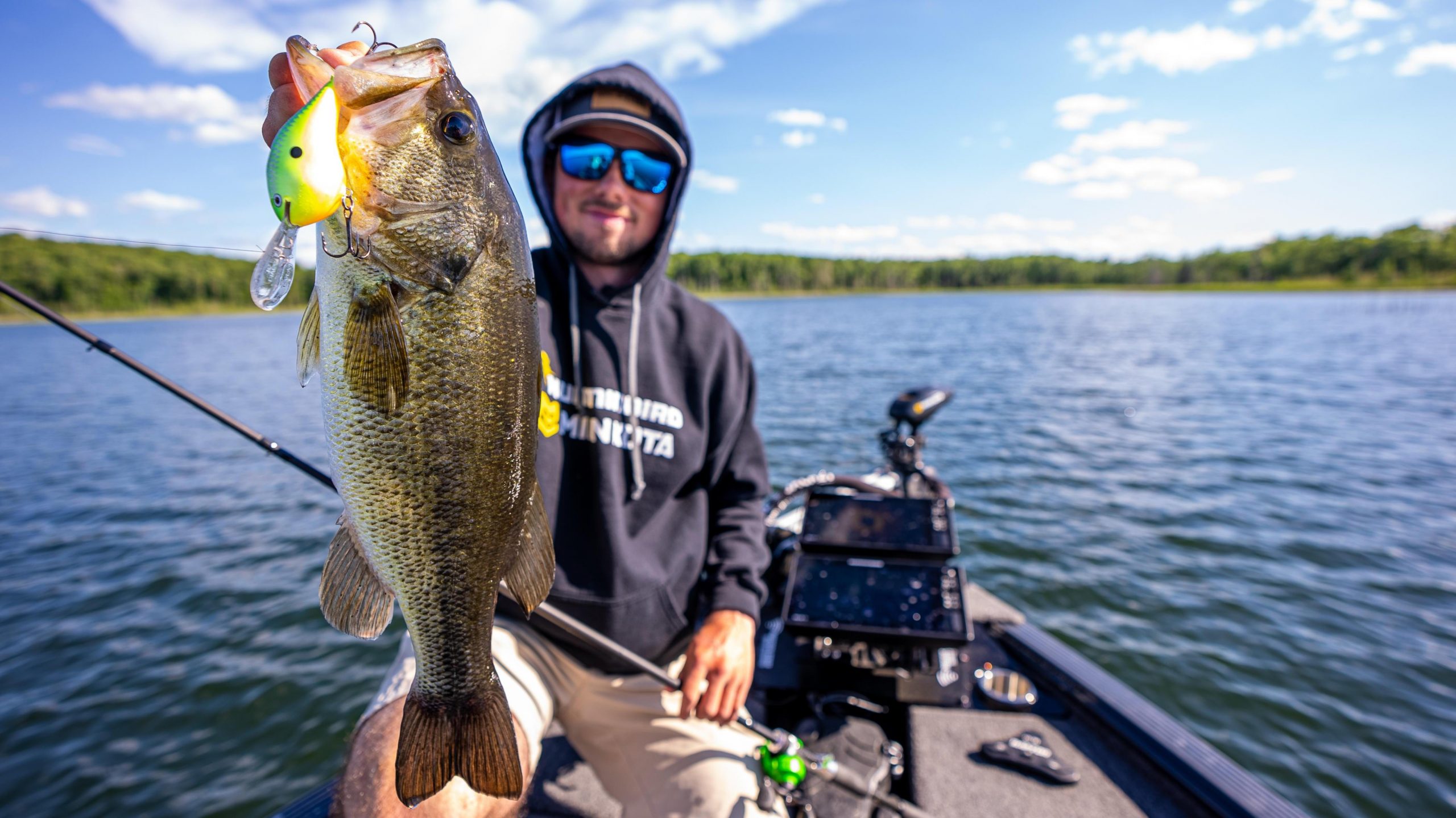Deep-diving crankbaits are excellent lures to find and trigger offshore bass during the summer months. Wired2fish’s Kobie Koenig reaches for them when bass have transitioned from shallower near-shore areas to deeper main lake points, deep shoreline edges, and offshore humps. He shares his process for boat positioning, how he works the bait, color selection, and rod and reel setup for fishing crankbaits effectively around grass and rock edges.
TACKLE
- BAIT – Rapala DT-16 Deep Diving Crankbait, color – Ike’s Rasta
- LINE – Sufix Advance Fluorocarbon, 14-pound
- REEL – 13 Fishing Inception Sport Z Casting Reel, 7.3:1
- ROD – 13 Fishing Envy Black 2 Cast Rod, 7’4″ MH/Mod Fast
- SUNGLASSES – Costa Del Mar Rincon, Polarized Glass (580G)
Koenig’s 5 tips to more productive deep crankbait fishing:
- Position your boat downwind of the fish. Downwind boat positioning reduces spooking bass, much like playing the wind in hunting (less noise in this case). Additionally, tools like GPS trolling motor anchoring coupled with bow-based side or 360 Imaging allow you to make highly accurate and receptive casts to the most productive areas such as grass and rock transitions.
- Change up your crankbait retrieve. Speed and direction changes are crucial to triggering bites and are easily accomplished through a combination of rod tip and retrieve speed manipulations. Koenig is also a fan of killing crankbaits and letting them rise on the pause, a proven trigger for trailing bass.
- Choose bright colors to get the attention of fish. Koenig matches the hue of his crankbaits to the predominant forage and then takes it further by going bright and bold. For example, he uses bright chartreuse and yellow combinations on bluegill lakes and white or pearl varieties on shad fisheries. A “loud” color coupled with speed and direction shifts gets their attention and triggers the most aggressive bass.
- Make accurate lineups. Know where you’re casting the bait relative to the fish, structure, and cover. Use what tools you have at your disposal to make long casts parallel to grass lines but along the harder outer edge where bass and baitfish stack up. Repeat productive casts by lining up off of shoreline reference points, or if equipped, using side, 360, or live imaging sonar technologies.
- Use a beefier rod setup if fishing around grass. Koenig is a fan of moderate taper graphite rods over fiberglass, as rod tip snaps are more responsive when snapping the bait clear of grass strands. Along those lines, a heavier fluorocarbon in the 14-pound range provides the horsepower necessary for ripping the lure free and fighting bass around grass.
BOAT SETUP
- TROLLING MOTOR – Minn Kota Ultrex Trolling Motor
- FISH FINDER – Humminbird SOLIX 12 CHIRP MEGA SI+ G3
- FISH FINDER (360 Imaging) – Humminbird MEGA 360 Imaging












